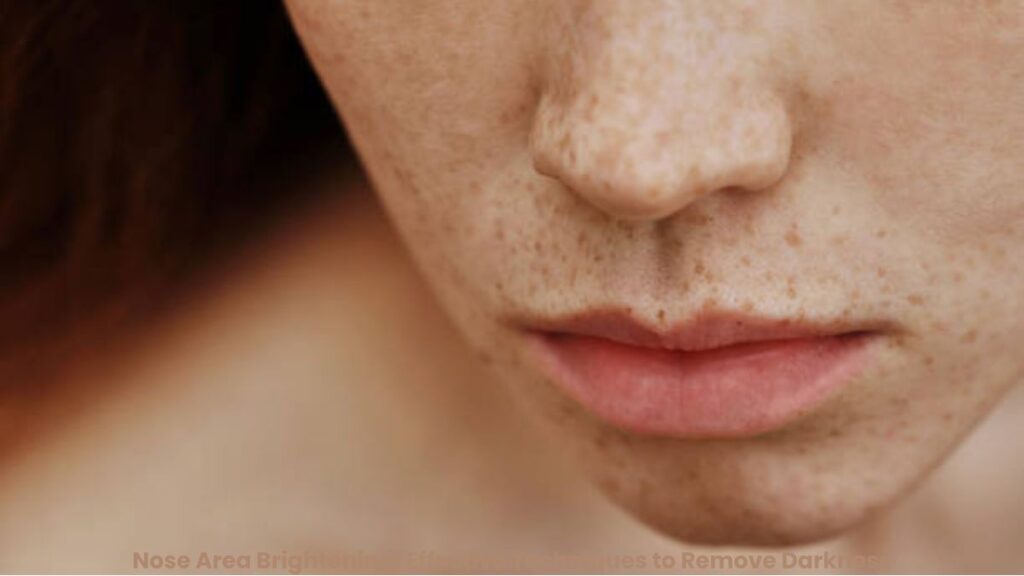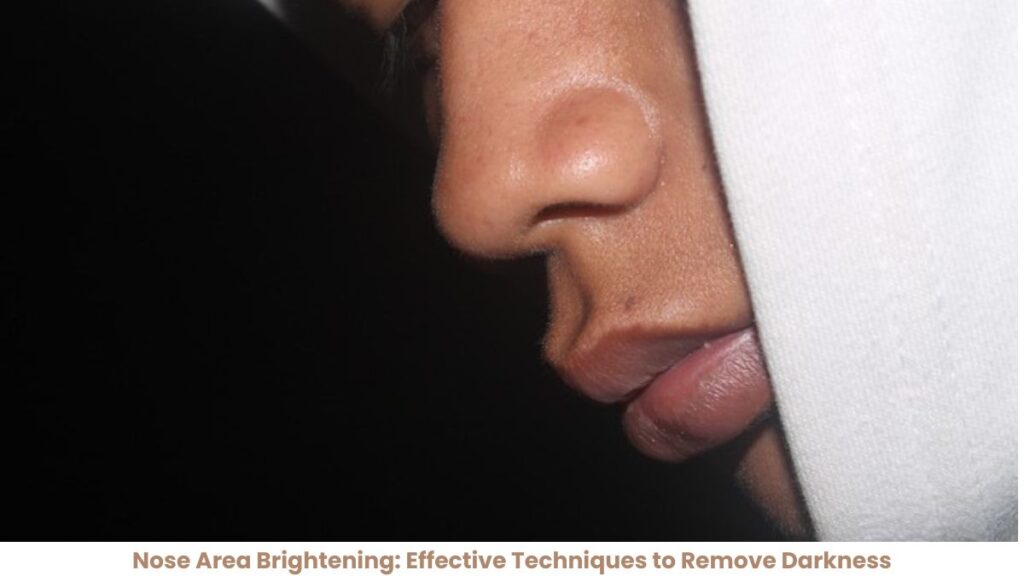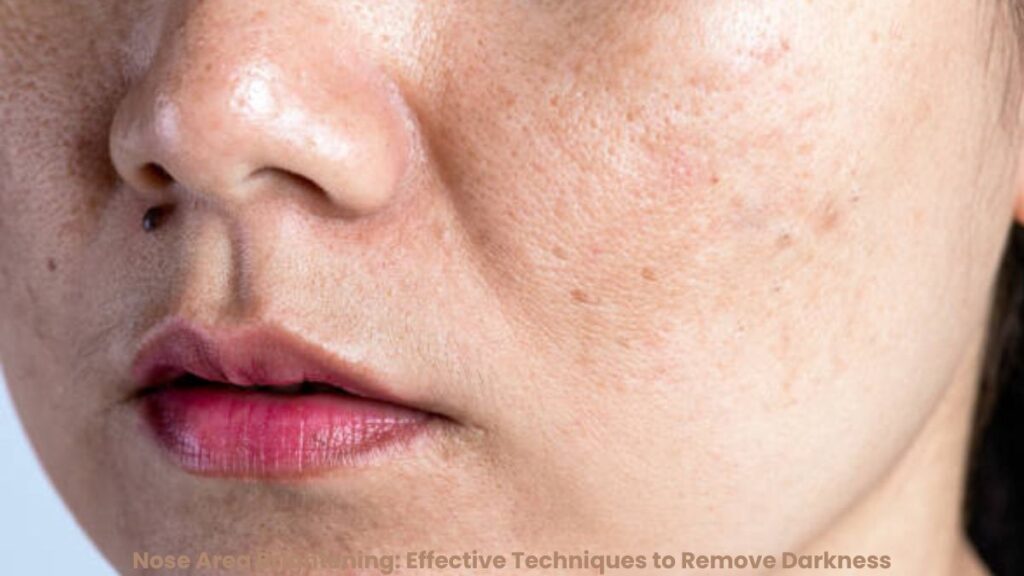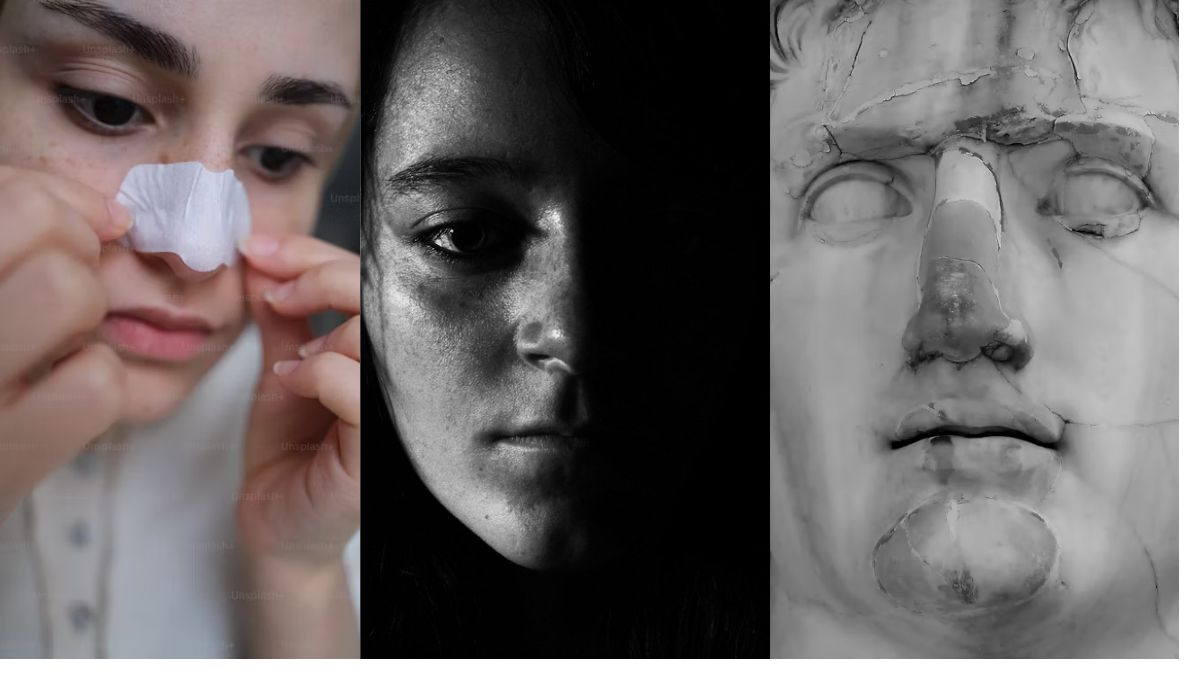Introduction:-
Unveiling Radiance: Expert Techniques for Nose Area Brightening

Achieving a radiant complexion often involves addressing areas of darkness, especially around the nose. While dark spots can be frustrating, there are effective techniques available to brighten this region and reveal a glowing complexion. In this article, we’ll explore some expert-approved methods for nose area brightening, ensuring that you can confidently tackle darkness and achieve the luminous skin you desire.
What is Effective Techniques for Nose Area Brightening?
- Exfoliation: Regular exfoliation helps remove dead skin cells, revealing fresh, brighter skin underneath. Opt for gentle exfoliants containing ingredients like alpha hydroxy acids (AHAs) or beta hydroxy acids (BHAs) to gently slough away dullness without irritating the skin.
- Topical Treatments: Incorporate topical treatments containing ingredients known for their brightening properties, such as vitamin C, niacinamide, and licorice extract. These ingredients help inhibit melanin production, reducing the appearance of dark spots over time.
- Sun Protection: Protecting your skin from harmful UV rays is crucial for preventing further darkening of the nose area. Apply a broad-spectrum sunscreen with an SPF of 30 or higher daily, even on cloudy days, and reapply every two hours when outdoors.
- Hydration: Keep the skin around your nose well-hydrated to maintain its health and vitality. Use a lightweight, non-comedogenic moisturizer to prevent dryness and flakiness, which can accentuate darkness.
- Professional Treatments: Consider professional treatments such as chemical peels, microdermabrasion, or laser therapy to target stubborn dark spots and achieve more significant results. Consult with a dermatologist to determine the most suitable treatment option for your skin type and concerns.
- Dietary Changes: Incorporate foods rich in antioxidants, such as berries, leafy greens, and citrus fruits, into your diet to support skin health and combat oxidative stress. Additionally, staying hydrated by drinking plenty of water helps flush out toxins and promotes a clearer complexion.
What are some common causes of darkness in the nose area?
Darkness in the nose area, commonly referred to as dark spots or hyperpigmentation, can be caused by various factors. Some of the most common causes include:
- Sun Exposure: Ultraviolet (UV) radiation from the sun stimulates the production of melanin, the pigment responsible for skin color. Prolonged sun exposure without adequate protection can lead to darkening of the skin, including the nose area.
- Hormonal Changes: Fluctuations in hormone levels, such as those occurring during pregnancy, puberty, or as a result of hormonal medications, can trigger an increase in melanin production, leading to hyperpigmentation.
- Post-Inflammatory Hyperpigmentation: Inflammation or injury to the skin, such as acne breakouts, cuts, or irritation, can result in post-inflammatory hyperpigmentation. Dark spots may develop in these areas as the skin heals.
- Genetics: Some individuals may be genetically predisposed to developing darker pigmentation in certain areas of the skin, including the nose.
- Skin Aging: As we age, the skin’s natural renewal process slows down, leading to a buildup of dead skin cells and uneven pigmentation. This can contribute to the appearance of dark spots in the nose area.
- Skin Rubbing or Friction: Constant rubbing or friction against the nose, either due to habitual touching or the use of abrasive materials, can cause irritation and inflammation, leading to darkening of the skin over time.
- Unprotected Chemical Exposure: Exposure to harsh chemicals or irritants, such as certain skincare products or environmental pollutants, without adequate protection can damage the skin barrier and contribute to hyperpigmentation.
- Medical Conditions: Certain medical conditions, such as melasma, which is characterized by patches of hyperpigmentation on the face, including the nose area, can also cause darkening of the skin.
Understanding the underlying cause of darkness in the nose area is essential for implementing effective treatment and prevention strategies. Consulting with a dermatologist can help identify the specific factors contributing to hyperpigmentation and determine the most appropriate course of action.
What are some professional treatments that can be considered for removing stubborn dark spots around the nose?
Several professional treatments are available for removing stubborn dark spots around the nose. These treatments are often performed by dermatologists or licensed skincare professionals and can effectively target hyperpigmentation while promoting skin rejuvenation. Some of the most common professional treatments include:

- Chemical Peels: Chemical peels involve the application of a chemical solution to the skin, which exfoliates the outer layer and stimulates cellular turnover. This helps to fade dark spots and promote a more even skin tone. Different types of peels, such as glycolic acid, salicylic acid, or trichloroacetic acid (TCA), may be used depending on the severity of the hyperpigmentation.
- Microdermabrasion: Microdermabrasion is a non-invasive procedure that uses a handheld device to gently exfoliate the skin and remove the outer layer of dead cells. This can help to reduce the appearance of dark spots and improve overall skin texture. Microdermabrasion is often combined with other treatments for enhanced results.
- Laser Therapy: Laser treatments, such as intense pulsed light (IPL) therapy or fractional laser resurfacing, can effectively target pigmented cells in the skin and break them down. This helps to lighten dark spots and promote collagen production, leading to smoother, more even-toned skin.
- Microneedling: Microneedling involves the use of a device with fine needles to create tiny punctures in the skin, stimulating the body’s natural healing response. This can help to reduce hyperpigmentation by promoting the production of new collagen and elastin, leading to firmer, more youthful-looking skin.
- Topical Treatments: In addition to in-office procedures, dermatologists may prescribe topical treatments containing ingredients such as hydroquinone, retinoids, or kojic acid to further lighten dark spots and prevent their recurrence. These treatments are often used in conjunction with professional procedures for optimal results.
- Cryotherapy: Cryotherapy involves the application of extreme cold to the skin using liquid nitrogen or another freezing agent. This can help to destroy pigmented cells and promote the growth of new, healthy skin cells, leading to a more even complexion.
Before undergoing any professional treatment for dark spots around the nose, it’s essential to consult with a qualified skincare professional or dermatologist to determine the most suitable option based on your skin type, concerns, and medical history. They can recommend a personalized treatment plan to help you achieve the desired results safely and effectively.
What dietary changes can support the goal of brightening the nose area?
Diet plays a significant role in skin health, including the brightness and clarity of the nose area. Incorporating certain foods into your diet can support your goal of brightening the nose area and promoting overall skin radiance. Here are some dietary changes that can help:

- Eat Antioxidant-Rich Foods: Antioxidants help protect the skin from oxidative stress caused by free radicals, which can contribute to skin damage and hyperpigmentation. Include plenty of fruits and vegetables rich in antioxidants, such as berries, oranges, kiwis, spinach, kale, and bell peppers, in your diet.
- Increase Vitamin C Intake: Vitamin C is essential for collagen production, which helps maintain skin elasticity and brightness. Incorporate foods high in vitamin C, such as citrus fruits, strawberries, guavas, kiwis, and bell peppers, into your meals and snacks.
- Consume Omega-3 Fatty Acids: Omega-3 fatty acids have anti-inflammatory properties and can help reduce skin inflammation and redness. Include sources of omega-3 fatty acids in your diet, such as fatty fish (salmon, mackerel, sardines), walnuts, flaxseeds, and chia seeds.
- Stay Hydrated: Drinking an adequate amount of water is crucial for maintaining skin hydration and promoting a healthy complexion. Aim to drink at least 8 glasses of water per day, and consume hydrating foods such as watermelon, cucumber, and celery.
- Limit Sugar and Processed Foods: High intake of sugar and processed foods can contribute to inflammation and skin issues, including hyperpigmentation. Limit your consumption of sugary snacks, desserts, and processed foods, and focus on whole, nutrient-dense foods instead.
- Include Probiotic-Rich Foods: Probiotics help maintain a healthy gut microbiome, which can in turn support skin health. Incorporate probiotic-rich foods such as yogurt, kefir, sauerkraut, and kimchi into your diet to promote gut health and potentially improve skin brightness.
- Choose Foods with Zinc: Zinc plays a role in skin healing and regeneration, making it important for maintaining skin health and brightness. Include foods rich in zinc, such as oysters, beef, poultry, pumpkin seeds, and lentils, in your diet.
- Opt for Green Tea: Green tea is rich in antioxidants and has anti-inflammatory properties, which can help protect the skin from damage and promote a more even complexion. Drink green tea regularly or incorporate it into your skincare routine for added benefits.
By making these dietary changes and focusing on nutrient-dense foods that support skin health, you can help brighten the nose area and achieve a radiant complexion from the inside out. Additionally, maintaining a balanced diet rich in vitamins, minerals, and antioxidants can contribute to overall well-being and vitality.
Conclusion:
Achieving a brighter nose area is within reach with the right techniques and skincare regimen. By incorporating exfoliation, topical treatments, sun protection, hydration, professional treatments, and dietary changes into your routine, you can effectively remove darkness and unveil radiant skin. Remember to be patient and consistent with your approach, as visible results may take time to manifest. With dedication and the right strategies, you can confidently bid farewell to nose area darkness and embrace a luminous complexion.






